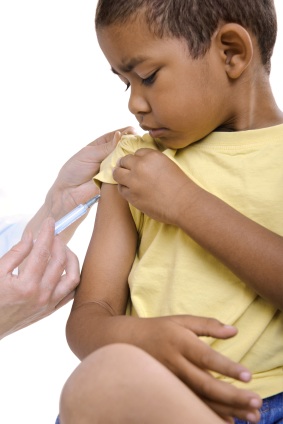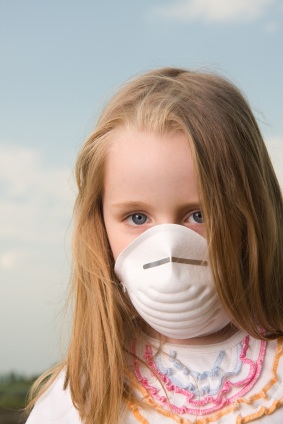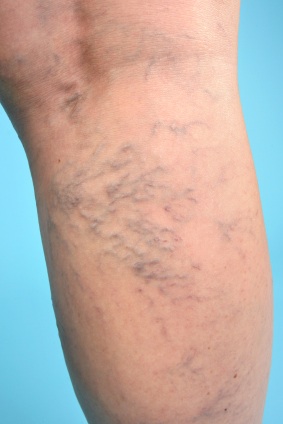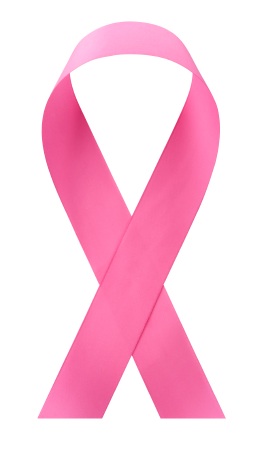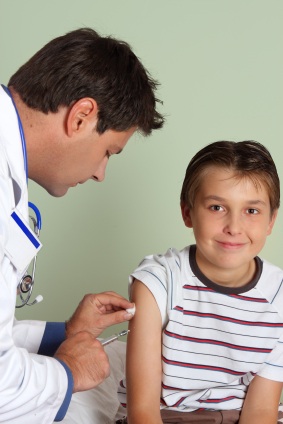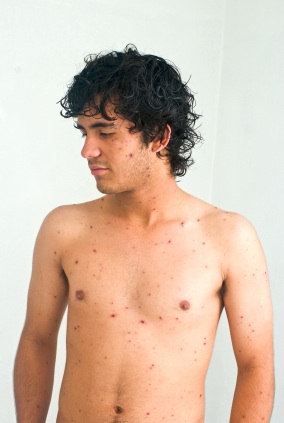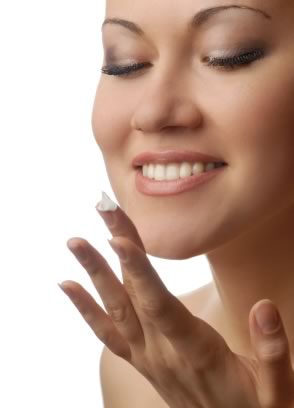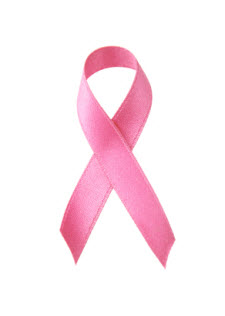Riboflavin, or vitamin B2, is one of a family of eight B vitamins. It helps the body convert food, or carbohydrates, into fuel, known as glucose, which can be burned to produce energy.
Vitamin B Complex
There are eight separate vitamins within the B complex, including B1, B2, B3, B5, B6, B7, B9 and B12. All eight B vitamins are essential for the proper growth and maintenance of the human body. They provide the essential nutrients for growth and a variety of body functions. Most importantly, they can be found in a wide range of plant and animal sources.

Vitamin B1
Vitamin B1, also known as thiamin, and B2, riboflavin, aid the body in the production of energy as well as impacting enzymes that aid in the development of muscles, nerves and the heart.
Niacin
Niacin, known as B3, promotes energy production in cells and is important for maintaining healthy skin and nervous and digestive systems.
Vitamin B5
Vitamin B5, called pantothenic acid, aids in the normal growth and development of the body.
Helping the body to break down protein and aiding with the health of the nervous system, red blood cells and parts of the immune system is Vitamin B6, also known as pyridoxine.
Vitamin B7
Vitamin B7, or biotin, is another one that helps break down protein but it also does the same for carbohydrates and aids in the production of hormones.
Folic acid, known as B9, is important for the production of cells in a body and maintains DNA. It is also crucial for the creation of red blood cells.
B12 is also known as cobalamin. Its job is to help in the growth of the body. B12 also helps in the production of blood cells and functions of the nervous system.
Someone having a deficiency in certain B vitamins is at risk of anemia, appetite loss, depression, abdominal pain, respiratory infections and hair loss.
Vitamin B2, riboflavin
History of Riboflavin
Riboflavin is yellow-orange in color and sometimes used as a food coloring or to fortify certain foods. Vitamin B2 was discovered in the last 1920s and Max Tishler, while working for Merck and Co., invented a way to synthesize the micronutrient. Like all B vitamins, riboflavin is water soluble, meaning the body does not store it so it must be replenished every day. Vitamin B2 is not active in a free form, but does work as a primary component of two coenzymes called flavin adenine dinucleotide (FAD) and mononucleotide (FMN). Coenzymes that come from riboflavin are called flavocoenzymes, and in turn, enzymes that use flavocoenzymes are named flavoproteins.
It was isolated in its pure form in 1933 and the first synthesis of riboflavin occurred two years later.
Riboflavin keeps the body healthy in a number of ways. It aids in the conversion of food into energy, as well as changing an amino acid called tryptophan into niacin, which is another B vitamin. Niacin can be used to help increase lipoprotein, or HDL, which is known as “good cholesterol.”
Riboflavin also interacts with other B vitamins, allowing them to perform their jobs more efficiently. A severe deficiency in riboflavin can lead to problems with various enzyme systems.
Antioxidant Benefits
Vitamin B2 also acts as an antioxidant which can help rid the body of damaging free radicals. These free radicals occur naturally in the body but can cause damage to cells and DNA. Free radicals can also contribute to the aging process and some health problems, including heart disease and cancer. However, riboflavin can seek out these damaging agents, neutralize them and may even help reduce the amount of damage they cause.
Riboflavin can also help improve some health conditions, including:
Anemia
People with iron deficiency anemia often have low levels of certain antioxidants, including riboflavin. The same is true of children with sickle-cell anemia, which is a blood disorder in which blood cells are misshapen. Studies have suggested taking riboflavin supplements can improve a patient’s response to iron therapy. Being deficient in riboflavin impacts the body’s ability to metabolize iron.
Animal research indicates riboflavin deficiency may impair the ability to absorb iron, increase intestinal loss of iron and impair the use of iron to create hemoglobin. It has been shown in humans that improving riboflavin nutritional values increases circulating hemoglobin levels.
Cataracts
In addition to other nutrients, vitamin B2 is important for a person to maintain normal vision. A cataract is a condition in which damage to the lens of the eye can cause vision to become cloudy. Cataracts related to aging are the leading cause of vision disability in the U.S. The antioxidant effect in riboflavin may help with this situation. Some early results from studies indicate riboflavin might help prevent cataracts. However, too much riboflavin – above 10 milligrams per day – can actually promote eye damage from the sun.
Migraine headaches
Early research indicates riboflavin may also help reduce the frequency and duration of migraine headaches. Some evidence suggests impaired mitochondrial oxygen metabolism in the brain could help cause migraine headaches. Riboflavin has been investigated as a possible solution to this problem due to its relationship to the electron transport chain. One study showed riboflavin to be more successful than a placebo in reducing the number of migraine attacks as well as the number of headache days.
Other uses
More research is needed but Vitamin B2 may also help improve cognitive function and depression. It has also been investigated as a possible performance enhancer for athletes, though supplementation with Vitamin B2 has not been shown to increase exercise tolerance.
Sources of Vitamin B2
Fortunately, riboflavin in its natural form is very easy to find. Most food derived from animals and plants contain at least some level of riboflavin. Since 1943, almost all wheat flour and bread have been enriched with riboflavin, as well as thiamin, niacin and iron. Dietary data indicates the average U.S. male takes in about two milligrams per day of riboflavin, while the average woman takes in about 1.5 milligrams per day. Both these levels are above the recommended daily allowance, and similar to the intake levels for elderly men and women.
Some sources of Vitamin B2 are better than others. Among the best nutritional sources include brewer’s yeast, almonds, whole grains, wheat germ, wild rice, mushrooms, soybeans, milk, yogurt, eggs, broccoli, Brussels sprouts and spinach. While grains are often a good source, those that are refined or milled often have the riboflavin removed by the process. Therefore, whole grain foods, such as oatmeal or whole wheat, are better choices. Also, refined foods that are listed as enriched have had the lost riboflavin added back. Refined, but non-enriched foods provide little riboflavin. Below are some examples of riboflavin content:
- A cup of fortified cereal contains between 0.59 milligrams and 2.27 milligrams.
- A cup of nonfat milk has 0.34 milligrams.
- A large, cooked egg contains 0.27 milligrams.
- An ounce of almonds has 0.23 milligrams.
- A half cup of boiled spinach has 0.21 milligrams.
However, riboflavin can be easily destroyed by exposure to sunlight. For example, 50 percent of the riboflavin found in a glass of milk can be destroyed after about two hours of sitting in a glass container in bright sunlight. This is the reason milk is packaged in opaque or cardboard containers. Heat does not destroy riboflavin, but it can be lost in the water when foods are boiled or soaked. To avoid this, roasting and steaming are the preferred cooking methods in order to preserve more of the vitamin.
Recommended amounts
The level of Vitamin B2 someone should be getting on a daily basis changes depending on age and, for women, whether they are pregnant or breastfeeding.

Pediatric recommended amounts are as follows and were set in 1998:
- Infants from birth to 6 months: 0.3 milligrams are adequate amount.
- Infants 7-12 months: 0.4 milligrams are adequate.
- Children 1-3 years: 0.5 milligrams.
- Children 4-8 years: 0.6 milligrams.
- Children 9-13 years: 0.9 milligrams.
- Males 14-18 years: 1.3 milligrams.
- Females 14-18: 1 milligram.
- Adult daily recommended amounts are:
- Males 19 and older: 1.3 milligrams.
- Females 19 and older: 1.1 milligrams.
- Pregnant females: 1.4 milligrams.
- Breastfeeding females: 1.6 milligrams.
Riboflavin Deficiency
While the recommended daily allowance of Vitamin B2 should be relatively easy to reach for someone eating a healthy diet, those who do not are at risk of a deficiency, known as ariboflavinosis. This is especially true of alcoholics and the elderly, as well as anorexics. In addition, those who are lactate intolerant may not consume milk or other dairy products, which are good sources of Vitamin B2. A healthy diet is one consisting of at least five daily servings of fruits and vegetables as well as portions of grains. However, athletes and those with busy or stressful lives may need to take in more Vitamin B2 than normal.
Some early signs of riboflavin deficiency include trembling, dizziness, poor concentration and memory and blood-shot, red and gritty-feeling eyes. Later symptoms include fatigue; slow growth; problems with the digestive system; sores or cracks around the mouth; a swollen, magenta tongue; tired eyes; sensitivity to light; and a swollen and sore throat. There may also be an inflammation of the skin that appears scaly and greasy.
A study of pregnant women believed to have an increased risk of preeclampsia – which is characterized by elevated blood pressure, protein in the urine and edema (significant swelling) – found those that were riboflavin deficient were four and half times more likely to develop preeclampsia than those who had adequate levels of the vitamin. In about five percent of cases, preeclampsia can lead to eclampsia, which is a leading cause of maternal death.
Supplements
For those who may not get enough Vitamin B2 in their daily diet, riboflavin supplements are also available, usually in 25-, 50- and 100-milligram tablets. The most common types found in supplements are riboflavin and riboflavin 5’-monophosphate. It is often found in multivitamins and vitamin B-complex supplements.
Riboflavin is best absorbed when taken between meals. When selecting a multivitamin to help provide Vitamin B2, selecting one that provides 100 percent to 300 percent of the daily recommended value for all essential vitamins and minerals is usually a good choice. It is also better to select a supplement that is taken two to four times a day, rather than a one-a-day variety. A health care professional should be consulted before taking any supplement, especially if one is being considered that has doses higher than twice the recommended daily allowance.
While Vitamin B2 supplements are relatively safe, there still can be some interactions with medication. Again, a healthcare professional should be consulted. Drugs treating gastrointestinal spasms, asthma, depression and motion sickness can inhibit the body’s ability to absorb Vitamin B2. Also, riboflavin can interfere with the body’s ability to use tetracycline, which is an antibiotic. It is recommended the supplement be taken at a different time of day than the antibiotic to avoid this problem. Other medications may lower the amount of riboflavin in the body or inhibit the body from properly absorbing it.
Even at high levels, there is little risk to humans. However, at doses of 10 milligrams or higher per day, the eye may become more sensitive than normal to sunlight. Someone taking this amount of riboflavin each day should wear sunglasses to protect their eyes from damage due to ultraviolet light.
Very high doses of Vitamin B2 can cause minor side effects, including itching, numbness, sensations of burning or prickling, yellow or orange urine and sensitivity to light. There have been very rare reports of allergy or anaphylaxis being associated with riboflavin supplementation.
Since Vitamin B2, like all B vitamins, is water-soluble, excess levels are often released through urine.
Essential Ingredient
Vitamin B2, also known as riboflavin, is an important part of the human body’s ability to convert food into energy and is necessary for good health and well being. Usually the recommended daily amounts of it can be acquired with a healthy diet or through safe and easy to use supplements. There is also little risk of overdosing on Vitamin B2 since excess levels are usually excreted through urine. Maintaining the proper amount of riboflavin in the body may help prevent or ease complications from many health problems. A physician should be consulted to ensure the correct amount of the vitamin is being absorbed.




